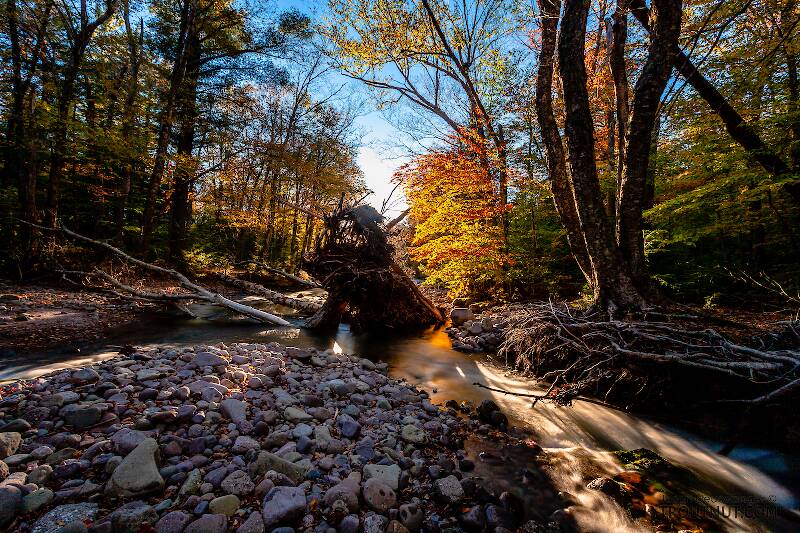
Blue-winged Olives
Baetis
Tiny Baetis mayflies are perhaps the most commonly encountered and imitated by anglers on all American trout streams due to their great abundance, widespread distribution, and trout-friendly emergence habits.


Calineuria californica (Golden Stone) Stonefly Nymph Pictures
This is a difficult one. It keys convincingly to either Calineuria or Doroneuria. There is no mesal longitudinal row of silky hairs on thorax and abdominal dorsum, in either my pictures or anything I can see up close under the microscope. Lacking those hairs should indicate Calineuria. But abdominal sternum 7 has an incomplete posterior setal fringe, which would indicate Doroneuria, although the key says "usually" on that characteristic. For now I'm going with Calineuria, but it's far from certain. Maybe it's a younger Doroneuria and they don't grow that row of hairs until they're older. The markings on the head, especially the shape of the bright spot around the posterior ocelli, match online images of Calineuria californica better than Doroneuria.
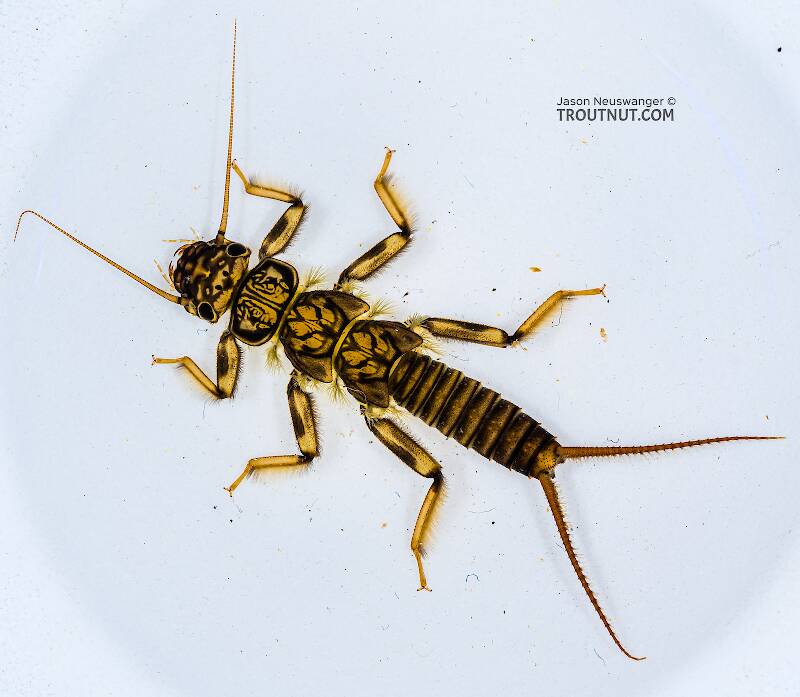
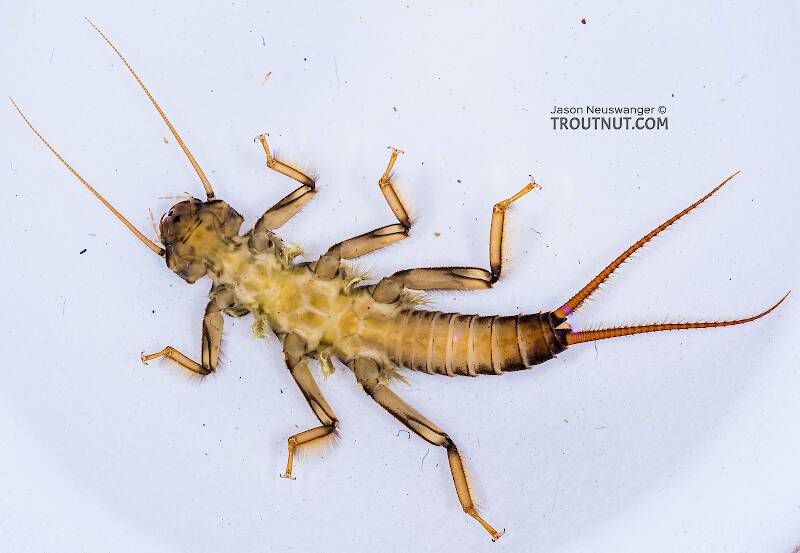
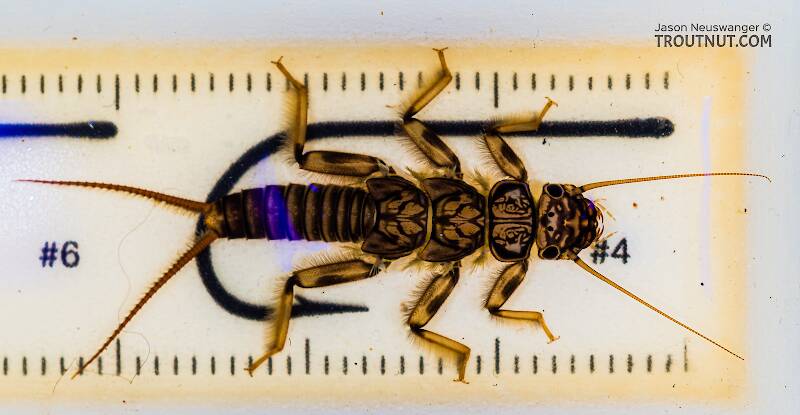
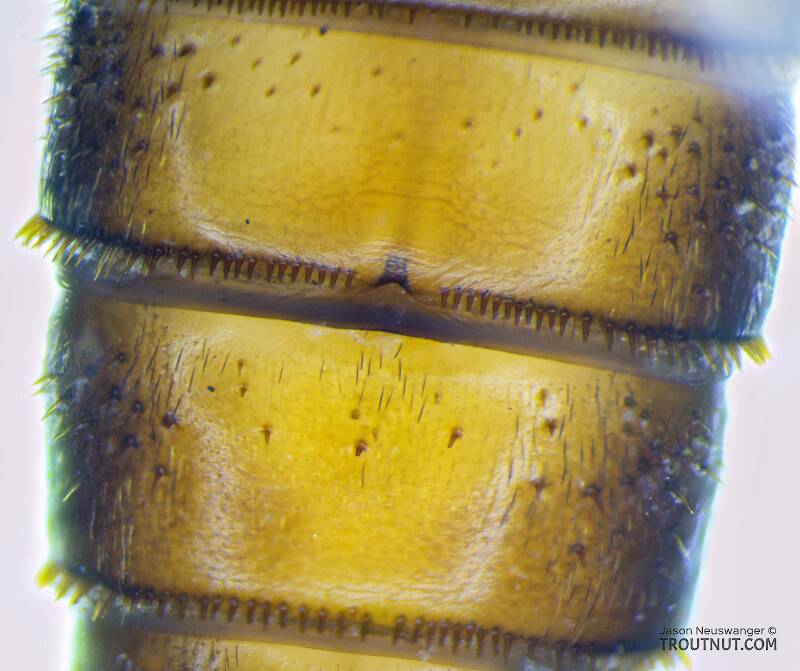
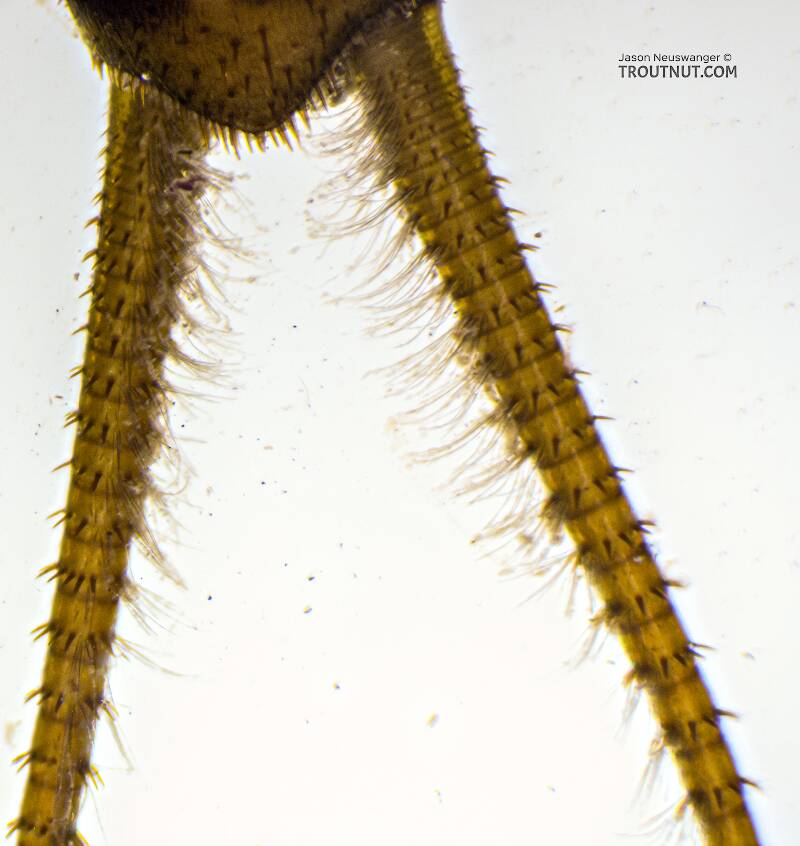
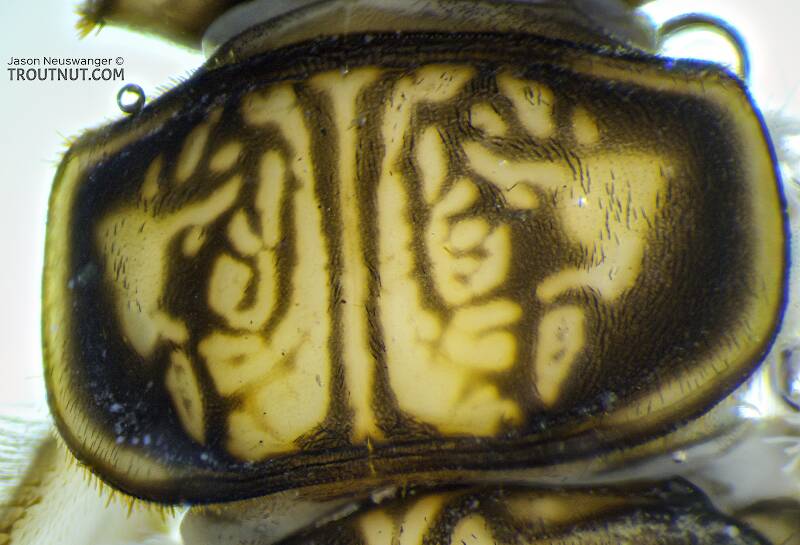
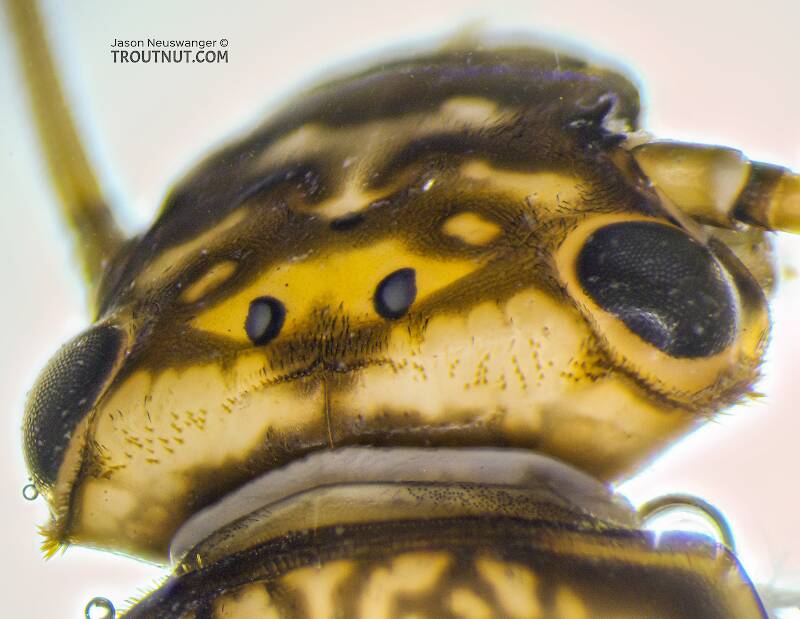
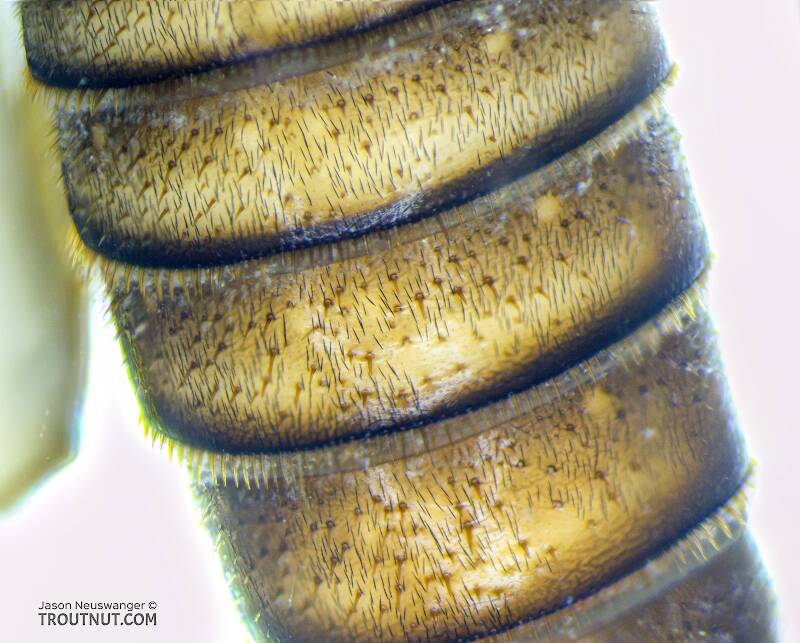
This stonefly was collected from the Yakima River in Washington on April 24th, 2022 and added to Troutnut.com by Troutnut on April 27th, 2022.
Start a Discussion of Nymph
Calineuria californica (Golden Stone) Stonefly Nymph Pictures
Collection details
Date: April 24th, 2022
Added to site: April 27th, 2022
Author: Troutnut

